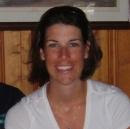— Douglas Grudzina
 Do you believe it’s been twenty-six years since the publication of A Nation at Risk launched a nationwide fury of standards-setting and assessment-writing, all with the ostensible goal of improving our students’ performance in essential disciplines like mathematics, science, and—of course—English language arts? Just about every state and territory did something—some better than others. Organizations like the National Council of Teachers of English and the International Reading Association developed their standards.
Do you believe it’s been twenty-six years since the publication of A Nation at Risk launched a nationwide fury of standards-setting and assessment-writing, all with the ostensible goal of improving our students’ performance in essential disciplines like mathematics, science, and—of course—English language arts? Just about every state and territory did something—some better than others. Organizations like the National Council of Teachers of English and the International Reading Association developed their standards.An entire generation has been born, entered kindergarten, graduated from high school, (attended college), and begun their teaching careers under America’s “new and improved” educational system.
But in a number of key ways and for a number of students, things did not get much better. A large part of the problem was that, while most states did something, few states did anything in concert with any other state. Delaware’s education system evolved in ways completely independent of New York’s, California’s, and Maine’s. This might pose no problem if we had any assurance that a student who entered kindergarten in Delaware would graduate from high school in Delaware, attend a Delaware college, and work his or her entire career in Delaware.
The fact of the matter is, however, that the typical American student attends from three to five diverse and independent school systems between kindergarten and grade twelve. Different sources provide different statistics, but between military and corporate moves, divorce and remarriage, and any number of other situations that require a family to relocate, a student beginning kindergarten in Delaware is not likely to graduate from high school in Delaware. By the same token, a student graduating from high school in Maine probably did not begin kindergarten in Maine. And a fifth-grader in Nebraska… (well, you get the idea).
In response to a perceived need for a more comprehensive and coherent educational system, the National Governor’s Association and the Council of Chief State School Officers—in partnership with Achieve, Inc., ACT, and The College Board—have been collaborating on what they call the “Common Core State Standards Initiative.” At present, forty-nine states and territories have signed-on to the process and have more-or-less agreed to adopt the final Common Core Standards as their state standards.
Four states have opted out of the initiative. (The renegades, in case you're interested, are Alaska, Missouri, Texas, and South Carolina). J The stated purpose of these standards is to “define the rigorous skills and knowledge in English Language Arts and Mathematics that need to be effectively taught and learned for students to be ready to succeed academically in credit-bearing, college-entry courses and in workforce training programs” (Preamble to the Standards Draft Document).
Anyway, the big news is that a draft of the standards has been sent out to various groups (including NCTE, you can read their response here). Yesterday, for whatever reason, someone at Education Week released a review draft which can be viewed in PDF format here.
Whatever you feel about standards in general, the idea of national standards, and so on and so on, it’s really in everyone’s best interest to be informed what the standards are, what they mean, and how they’re going to affect teaching and learning.
Even if you ultimately have no comment one way or the other, they’re worth taking a look at.
Oh, and it’s only 40 days ‘til Labor Day.


















